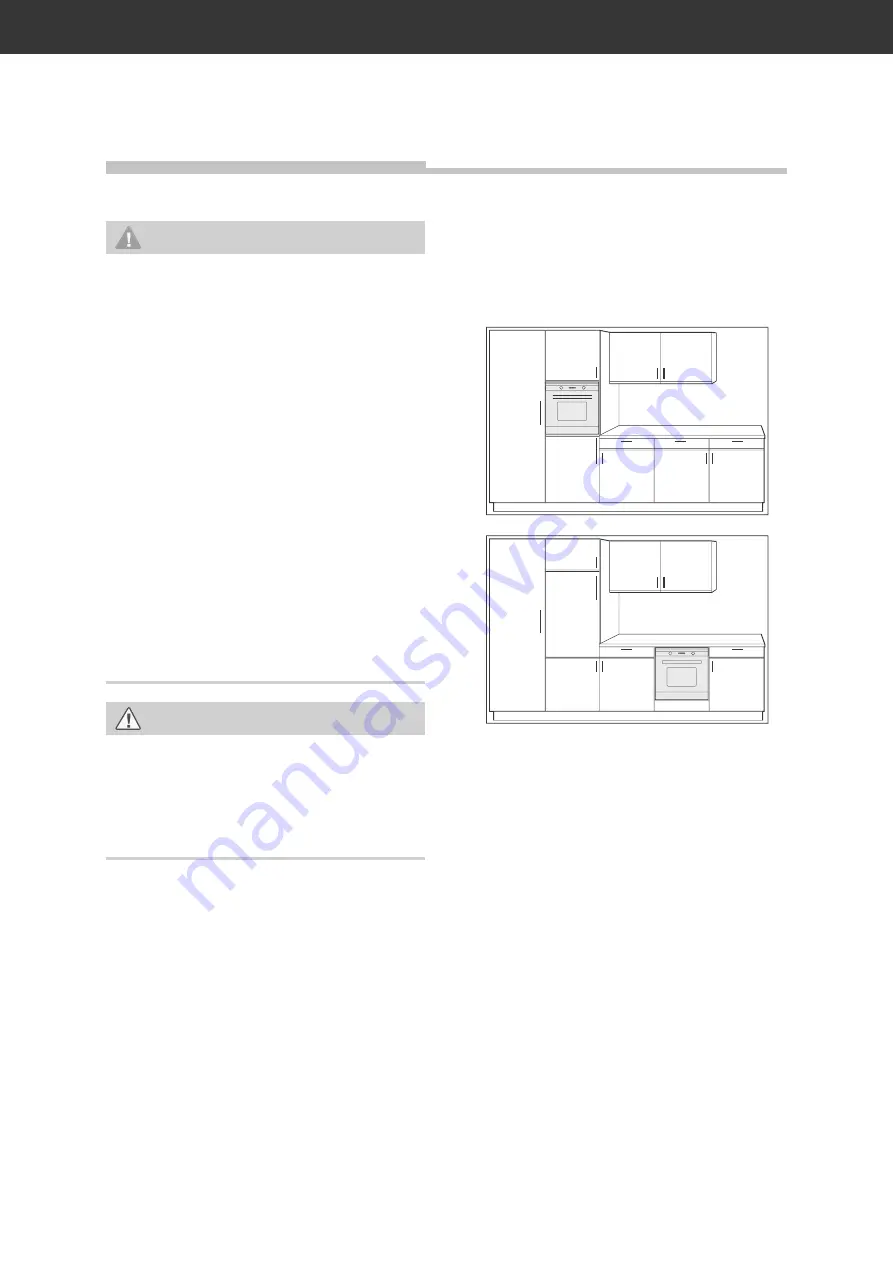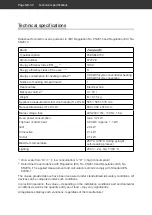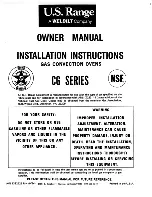
Installation and connection
Page GB-24
Installation and connection
WARNING
Risk of injury!
■
The built-in oven is heavy and bulky.
Get another person to help with mov-
ing and installation.
■
Do not use the oven door and door
handle as a step or for lifting.
Fire hazard!
Improper handling of the built-in oven
may result in damage or cause a fi re.
Heat trapped inside the appliance may
shorten its service life.
■
Ensure suffi cient ventilation. Do not
cover the vents, for example with
oven gloves or cookbooks.
■
When installing the appliance, follow
the dimension specifi cations for ven-
tilation.
CAUTION
Risk of damage!
Improper handling of the appliance
may result in damage.
■
Do not use sharp objects to unpack
the appliance.
Moving and unpacking
• Move the appliance using a trolley or with
the help of a second person.
• Carefully unpack the device and remove
all packaging items, plastic profiles, adhe-
sive strips and foam padding from inside,
outside and from the back plate of the
device.
Installing the built-in oven
The built-in oven is designed for installation in
standard kitchen units. It can be installed at
eye-level and underneath the worktop.
The following conditions must be observed:
– Do not install the built-in oven directly
next to a refrigerator or freezer. This will
increase its energy consumption unneces-
sarily due to heat emission.
– The best place is next to the sink. You have
an additional work surface and dirty dishes
can be washed immediately.
– Before installation, check whether the ap-
pliance dimensions are compatible with
your furniture dimensions.
– In terms of fire protection, the built-in oven
conforms to Type Y (EC 335-2-6). This
type of appliance may only be installed on
one side of taller kitchen cabinets, appli-
ances or walls.
– The installation recess may not have a rear
panel, at the most it may have an add-on
edge measuring no more than 50 mm.
– The built-in cabinet can be equipped with
either ledges/rails or an intermediate shelf
with ventilation cut-out.







































